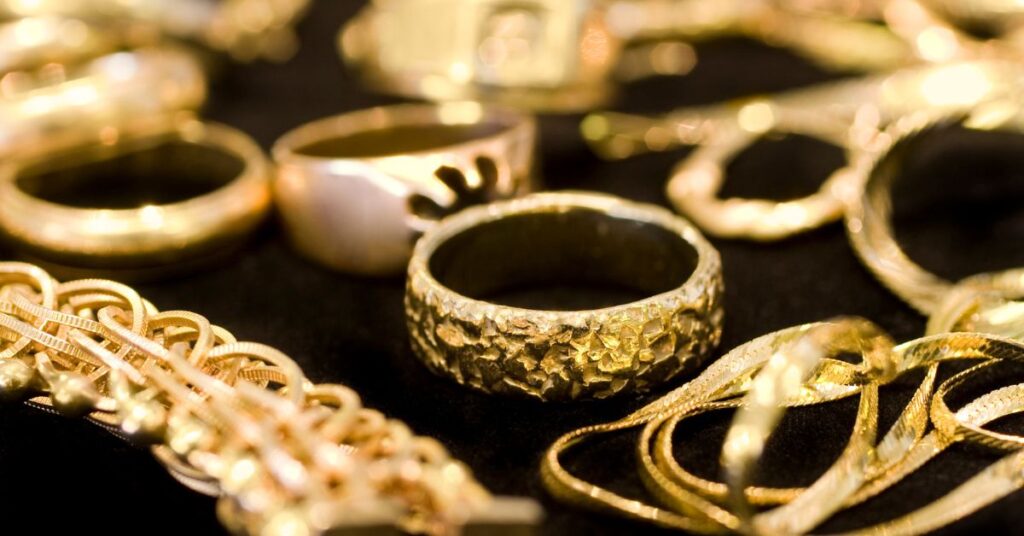Introduction
Gold jewelry represents more than just a financial investment or a fashion accessory; it is a symbol of wealth, status, and personal style. At the heart of gold jewelry’s allure is its karat, a term that indicates the purity of the gold used. Understanding the karat of gold is essential for anyone looking to buy, sell, or appraise gold jewelry, as it directly influences the piece’s value, color, and strength. This blog dives deep into what karat means in the context of gold jewelry, explores how it affects the jewelry’s characteristics and value, and provides insight into the market trends affecting preferences for different karats around the world.
The concept of karat plays a crucial role in the gold jewelry market. It not only affects the purity and appearance of the jewelry but also its durability and, ultimately, its market value. For consumers and investors alike, grasping the significance of the karat can lead to more informed decisions, ensuring satisfaction and value for money in every gold purchase.
Understanding Karat
In the realm of gold jewelry, ‘karat’ is a measure that defines the purity of the gold, directly influencing its quality and price. The karat system ranges from 24K, which is pure gold, down to lower karats like 18K, 14K, and even 10K, which contain proportionately less gold and more of other metals such as silver, copper, or zinc. Pure gold, or 24K, is naturally soft and malleable, making it impractical for most jewelry due to its susceptibility to wear and deformation.
As the karat decreases, the proportion of gold in the jewelry diminishes, but the addition of other metals enhances its strength and durability. This blend also affects the color of the gold; for example, increasing the copper content in an 18K piece gives it a warmer, more rose-colored hue, while silver or palladium produces a paler, greenish cast. These variations allow for a wide range of aesthetic choices, making gold jewelry adaptable to different tastes and styles, and affecting its appeal and market value.
Impact on Value
The value implications of higher versus lower karat gold are significant and multifaceted. Higher karat gold jewelry, being closer to pure gold, is more valuable per unit of weight because it contains more of the precious metal. This makes 24K and 22K gold pieces particularly prized in cultures that value purity, such as in many Asian countries, where they are often given as wedding gifts or investment pieces.
However, the trade-off between durability and purity is a crucial consideration. Lower karat gold is more durable and better suited to everyday wear. This practical aspect can enhance the appeal of 14K or 18K gold jewelry in the Western markets, where jewelry is typically worn daily. Thus, while higher karat gold is more valuable in terms of material content, lower karat pieces might offer better value in terms of longevity and practicality, depending on the usage intentions of the buyer.
Evaluating Karat Value
Identifying the karat of gold jewelry is a fundamental skill for any buyer or seller in the gold market. Most gold jewelry pieces are stamped with hallmarks that indicate their karat, usually found in a discreet place on the jewelry. These marks, however, can wear off over time or may be absent in some pieces, especially in older or handcrafted items.
For a more thorough evaluation, several tools and tests can be employed. Professional jewelers use electronic gold testers, acid tests, and X-ray fluorescence scanners to determine the karat accurately. These methods can assess the metal’s purity without causing significant damage to the jewelry, ensuring that both the buyer and seller have a reliable understanding of the piece’s value based on its karat.
Market Trends
Current trends in consumer preferences for gold karat vary significantly across different markets and cultures. In the United States and Europe, 14K gold is widely popular due to its optimal balance between purity, durability, and cost. In contrast, in the Middle Eastern and South Asian markets, higher karats like 22K and 24K gold are preferred for their higher purity and investment value.
Geographically, there are also notable differences in karat popularity due to economic factors, fashion trends, and cultural significance of gold. These trends can influence global gold prices and the strategies of jewelers and goldsmiths, who must adapt their offerings to cater to changing consumer preferences.
Conclusion
The karat of gold jewelry significantly affects its value, appearance, and utility. As such, understanding the implications of different karat levels is crucial for anyone involved in the buying or selling of gold jewelry. Remembering that higher karat pieces are more valuable but less durable, while lower karat pieces offer greater toughness and affordability, can help guide purchasing decisions.For buyers and sellers alike, staying informed about the methods for evaluating gold karat and keeping an eye on market trends are essential strategies for navigating the complex world of gold jewelry. Contact us for more information.

